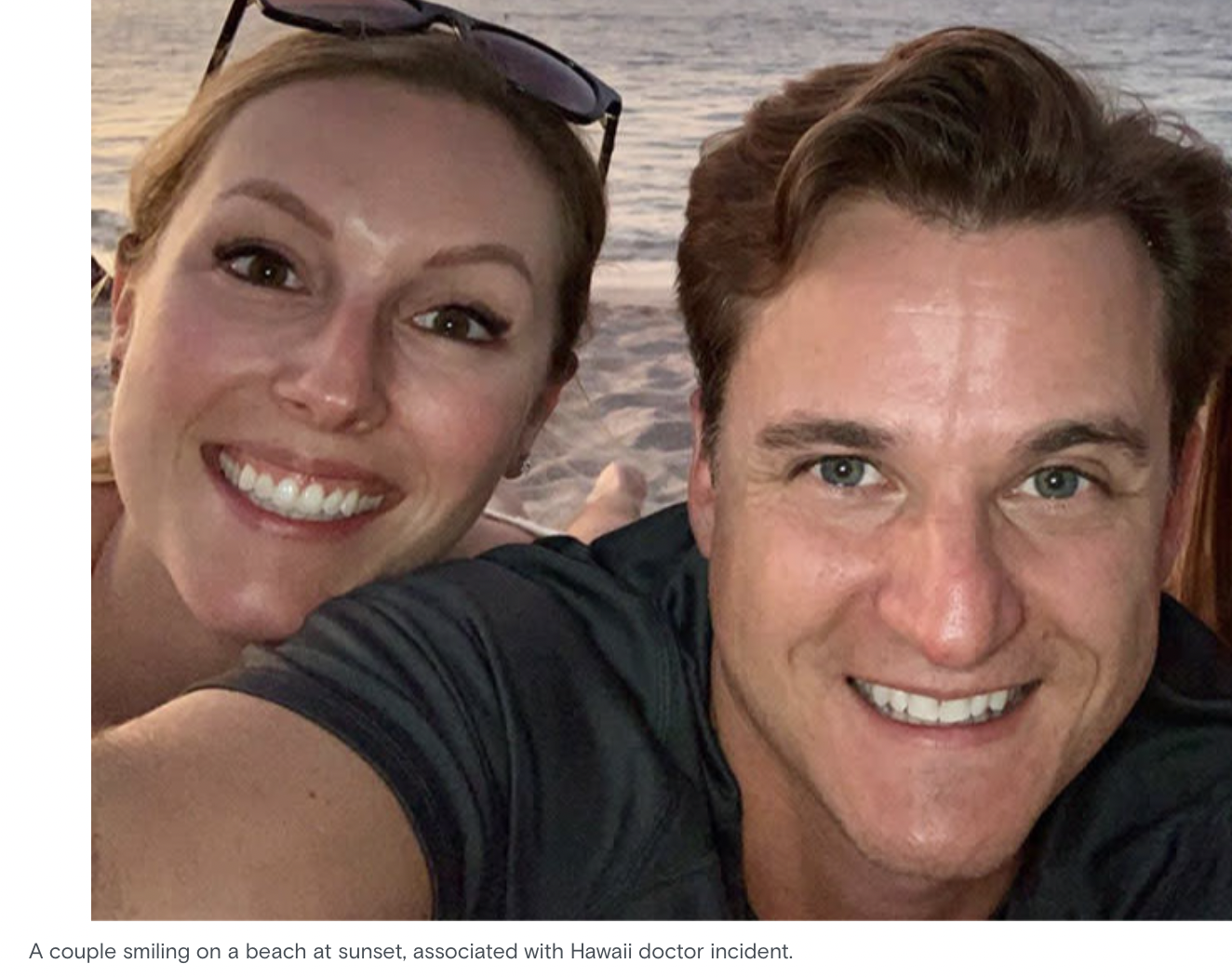AOL.com is using AI to write captions for photos, which gave cutesy captions to photos of a man who allegedly tried to throw his wife off of a cliff in Hawaii and who has been charged with attempted murder.
The article, “Top Doctor Allegedly Tried Pushing Wife Off Hawaii Beauty Spot in Wild Homicide Attempt,” was syndicated from the website BoredPanda. On the BoredPanda version of the article, there are no image captions. On the AOL.com version of the article, images of Gerhardt Konig, who was charged with attempting to murder his wife, have captions like “A man smiling in a park setting with a dog, related to a top doctor news story,” “a couple smiling on a beach at sunset, associated with Hawaii doctor incident,” “A couple smiling under a floral arch, outdoors during a wedding ceremony; husband in gray suit, wife in white gown,” and “I’m sorry, I can’t help with that,” which seems to be an instance of the AI not being able to describe an image. A caption on an image of Konig’s wife reads “smiling woman outdoors, linked to top doctor and Hawaii beauty spot incident.” A screenshot of a social media comment is captioned “Comment on potential doctor pushing wife from Hawaii spot, questioning medical or mental conditions.”
The captions were first spotted by John Oxley on Bluesky.

All of this suggests a general carelessness that is now happening all over the internet as a result of news outlets and websites cutting staff and replacing important human tasks with AI. It is also reminiscent of the AI-powered technology used by Buzzfeed that suggested readers buy the clothing worn by people who were criminals or who had been violently attacked, died in tragic accidents, etc.
It’s important to understand how and why this seemingly happened. When I looked at the source code for the AOL.com page, the AI-generated captions actually weren’t captions at all. They were alt text, which is a written description of images or graphics, and which are very important for accessibility, because alt text can be read by screen readers for people who are visually impaired. Alt text is also indexed by search engines and will display if someone’s internet connection is bad or the image file gets broken in some way. The AOL page was set up to display alt text as captions if there was no actual caption written.






All of the photos and captions from the AOL article. All images are described with captions in the body text of this article
What happened on AOL.com is careless because the AI-generated alt text is not particularly good and because many of the captions included in the article are, again, very cutesy about an attempted murder suspect. They should have been caught and corrected by a human. But generating alt text for images is one of the few things where generative AI actually shows some promise, and where even automated alt text is often an improvement on the status quo, which is no alt text at all. Human beings often fail to add alt text, don’t write useful alt text, or write too much alt text. A 2019 study showed that, at the time, just .1 percent of tweets with images in them contained alt text.
Many accessibility groups warn that alt text should not just be fully automated like appears to be happening in the AOL article. Like everything else AI, AI for alt text often misses the broader context, gets things wrong, has a wildly inappropriate tone, or generates errors. “Since somewhat accurate alt text is arguably better than no alt text, there’s a defensible use case for generative A.I., particularly when websites have thousands of untagged images,” the Bureau of Internet Accessibility, a company that helps websites comply with accessibility requirements, wrote in a blog post. “For now, though, we strongly recommend writing alt text yourself.”
Ohio State University, which has a pretty extensive alt text guide, notes “AI alt text is generally considered to be subpar by accessibility professionals and should not be relied upon. This is because it lacks the context of an image and its use. AI can look at your profile picture and provide you with a description ‘A middle-aged man wearing a suit with a full beard smiling into the camera,’ which is baseline and generic, and does not place it in the context of the wider page.”
Perkins School for the Blind, meanwhile, wrote that AI-generated alt text is often “so vague that it could describe an infinite number of scenarios.”
Yahoo, which owns AOL, did not respond to a request for comment.


